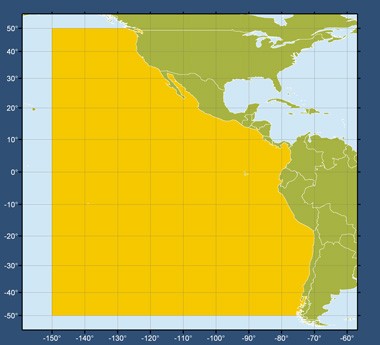 |
The functions of the Commission include, inter alia: to gather and interpret information on tunato conduct scientific investigation concerning the abundance, biology, biometry, and ecology of yellowfin and skipjack tuna in the Convention Area, and to recommend proposals for joint action for conservation.
Eastern Pacific Ocean
INTER-AMERICAN TROPICAL TUNA COMMISSION
| |||||||||||||||||||||||||||||||||||||||||||||||||||||||||||||||||||||||||||||||||||||||||
 | Fisheries and Resources Monitoring System |








